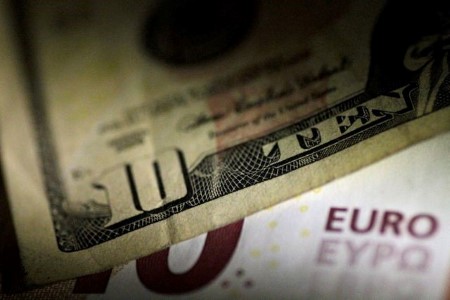




Inflation Update: Green light for easing
 DOWNLOAD
DOWNLOAD

December Economic Update: One for them, one for us
 DOWNLOAD
DOWNLOAD

Philippines Trade Update: Trade trajectories trend along
 DOWNLOAD
DOWNLOAD


Dollar softens against euro as inflation data shows cooling

The dollar softened against its major peers on Wednesday, helping the euro to a near eight-month peak, as the US consumer price index showed inflation is subsiding, reinforcing expectations that Federal Reserve interest rate cuts are near.
US CPI rose moderately in July and the annual increase in inflation slowed to below 3% for the first time since early 2021, adding to expectations for a rate cut next month, though likely less aggressive than markets hoped for.
The report adds to the mild increase in producer prices in July suggesting that inflation is on a downward trend. This should give the Fed room to focus more on the labor market amid growing concerns of a sharp slowdown.
“It mildly shrank the expectations of targeting a 50-basis point rate cut in September,” said Amo Sahota, director, Klarity FX, in San Francisco. “It’s been a much quieter reflective approach on the inflation number.”
The euro EUR= was last up 0.18% against the greenback to USD 1.1014, surpassing the high hit during the market turmoil last week, and was trading at its strongest level since Jan. 2. The dollar index =USD was slightly lower at 102.57.
Traders had been widely expecting a rate cut in September before the producer price data, and ramped up bets for a 50 basis-point cut after the release to 56% from 53% a day earlier, according to CME Group’s FedWatch Tool.
Sahota thinks the market is still on track for three 25 bps cuts this year from the Fed, rather than 100 bps by the end of the year.
STERLING DIPS, KIWI SLIDES
Sterling failed to gain on the weaker dollar and was down 0.29% at USD 1.2825 after data showed the rise in British consumer price inflation was smaller than expected in July as services prices – closely watched by the Bank of England – rose less rapidly.
The pound did soften on the euro, however, which was up 0.47% at 85.87 pence. Financial markets priced in a 44% chance of a quarter-point BoE rate cut in September, up from 36% before the data was released.
The kiwi was down 1.28% at 0.5999, after the Reserve Bank of New Zealand reduced the cash rate by a quarter point, its first easing since early 2020 and coming a year earlier than its own projections.
Meanwhile, Japanese Prime Minister Fumio Kishida’s decision to not run for reelection in his party’s leadership race next month had little effect on markets, analysts said.
The yen was last trading at 147.26 against the dollar.
“The Fed is cutting rates. That should be dollar negative,” said Vassili Serebriakov, FX strategist, at UBS. “The currency that’s probably still likely to do the best against the dollar is the yen. The Bank of Japan is raising rates, and that also contributes to the narrowing of rate differentials.”
(Reporting by Laura Matthews in New York; additional reporting by Kevin Buckland in Tokyo and Sruthi Shankar in Bengaluru; Editing by Ana Nicolaci da Costa, Emelia Sithole-Matarise, Jonathan Oatis, and Chizu Nomiyama)
This article originally appeared on reuters.com





 By Reuters
By Reuters